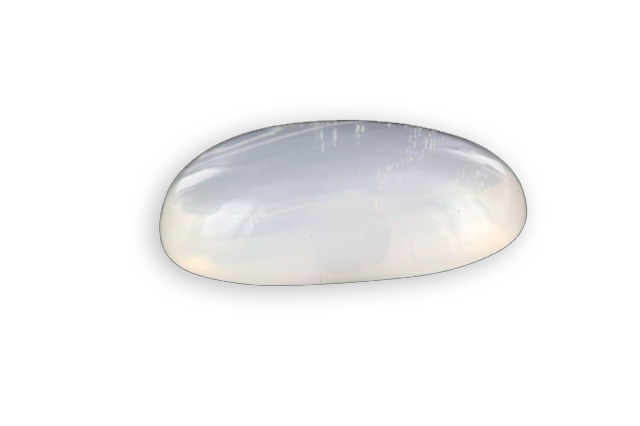
moonstone
The moonstone is composed of alkaline feldspar, mainly potassium in other words orthoclase, in its variety “adularia”. This is actually a microperthite resulting from a microscopic phase separation of platelets from a sodium feldspar, the albite, in the orthoclase during the cooling of the mixture








